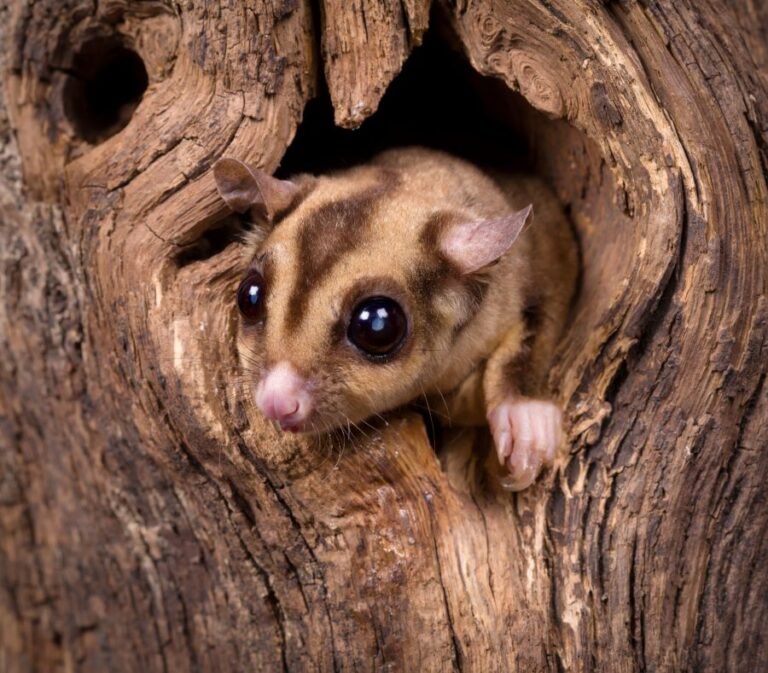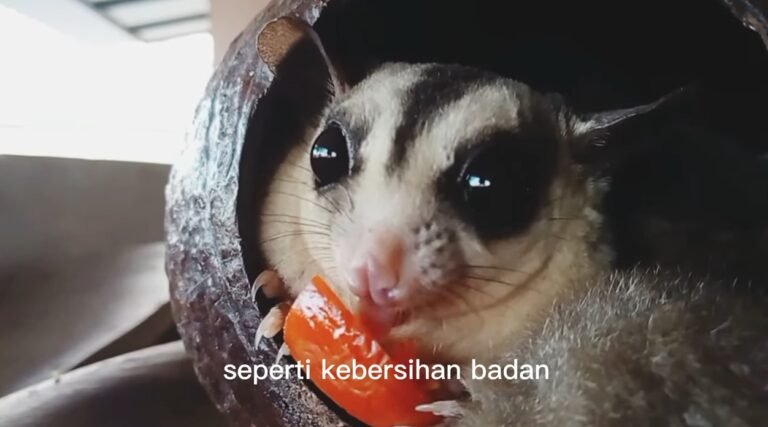How To Raise A Sugar Glider
How to Raise a Sugar Glider: Your Ultimate Guide
Are you thinking about getting a sugar glider as a pet? These adorable little creatures, also known as sugar babies, are becoming increasingly popular as pets due to their small size and playful nature. But, just like any other pet, sugar gliders require special care and attention to ensure their health and wellbeing. In this comprehensive guide, we will walk you through everything you need to know about raising a sugar glider, from their habitat and diet to their socialization and grooming needs.
Creating the Perfect Habitat
One of the first things you need to do before bringing home a sugar glider is to set up a suitable habitat for them. Sugar gliders are arboreal creatures, which means they like to climb and be up high. Here are some key points to consider when creating their habitat:
Cage Size and Setup
Sugar gliders need a spacious cage that allows them to climb, glide, and play. A cage with dimensions of at least 2 feet by 2 feet by 3 feet is recommended for a pair of sugar gliders. Make sure the bars are spaced closely together to prevent any escapes. Provide plenty of branches, ropes, and platforms for them to climb on, as well as nesting boxes or pouches for sleeping.
Temperature and Lighting
Maintaining the right temperature and lighting conditions is crucial for the health of your sugar glider. They thrive in temperatures between 75-85°F (24-29°C). Use a thermometer to monitor the temperature and adjust it as needed. Natural or artificial UVB lighting is also important for their wellbeing, as it helps with vitamin D synthesis. Make sure to provide both light and dark areas in the cage to mimic their natural habitat.

Bedding and Substrate
Choose a safe and non-toxic bedding material for your sugar glider’s cage. Avoid cedar and pine shavings, as they can be harmful to their respiratory system. Opt for beddings like shredded paper, recycled paper pellets, or coconut fiber. These materials are safe and also provide stimulation for your pet, as they love to burrow and hide.
A Balanced Diet for Healthy Gliders
A well-balanced diet is vital for the overall health and longevity of your sugar glider. In the wild, sugar gliders primarily feed on nectar, pollen, and the sap of trees. Here’s what you should include in their diet:
Protein-rich Foods
Protein is an essential component of a sugar glider’s diet. Offer them high-quality sources of protein such as cooked eggs, lean meats like chicken and turkey, mealworms, and low-fat plain yogurt. These foods should make up about 25-30% of their diet.
Fruits and Vegetables
Fruits and vegetables provide necessary vitamins and minerals to keep your sugar glider healthy. Offer a variety of fresh fruits like apples, grapes, and berries, as well as vegetables like carrots, broccoli, and leafy greens. These should make up around 50% of their diet.
Specially Formulated Pellets
To ensure that your sugar glider gets all the necessary nutrients, you can also provide them with specially formulated glider pellets. These pellets are designed to meet their specific dietary needs and can be found at most pet stores or online.
Giving Treats in Moderation
While it’s tempting to spoil your sugar glider with treats, it’s important to remember that moderation is key. Treats like mealworms, yogurt drops, and small pieces of fruit can be given as occasional rewards, but be careful not to overdo it. Too many treats can lead to weight gain and other health issues.
Healthcare and Socialization
Just like any other pet, sugar gliders require regular veterinary care to ensure they stay healthy and happy. Here are some important aspects to consider:
Find a Reputable Exotic Veterinarian
Sugar gliders are exotic pets, so make sure to find a veterinarian who specializes in their care. Regular check-ups are essential to catch any potential health issues early on. Additionally, your vet can provide guidance on vaccinations, parasite prevention, and dental care.
Regular Socialization
Sugar gliders are highly social animals and require daily interaction and bonding with their owners. Spend quality time with your sugar glider outside of their cage, allowing them to explore and play in a supervised environment. This not only ensures their mental wellbeing but also strengthens the bond between you and your pet.
Providing Enrichment
Enrichment activities are crucial to keep your sugar glider stimulated and entertained. Offer them a variety of toys, such as bells, puzzles, and climbing ropes. You can also create a small obstacle course or provide a glider-safe wheel for exercise.
Grooming and Hygiene
Maintaining proper hygiene is essential for keeping your sugar glider healthy. Here are some grooming tips to follow:
Nail Trimming
Regularly check your sugar glider’s nails and trim them if needed. Overgrown nails can cause discomfort and may even lead to injuries. Use small, animal-specific nail clippers to trim their nails carefully.
Bathing
Sugar gliders are known for their cleanliness and groom themselves like cats. However, if your glider gets dirty or sticky, you can give them a shallow bath in a sink or basin filled with lukewarm water. Make sure to use a glider-safe shampoo or simply clean them with a warm, damp cloth.
Ear and Teeth Cleaning
Inspect your sugar glider’s ears regularly for signs of dirt or discharge. If necessary, clean the external part of their ears with a cotton pad moistened with warm water. Additionally, provide them with dental chews or safe wooden toys to help keep their teeth clean and healthy.
Frequently Asked Questions
1: Can sugar gliders be potty trained?
Yes, sugar gliders can be potty trained to a certain extent. However, it requires patience and consistent training. Use a small litter box filled with paper pellets or shredded paper and place it in a corner of their cage. Gradually, they will learn to use it for their bathroom needs.
2: Are sugar gliders good pets for children?
While sugar gliders can make great pets, they may not be ideal for young children. These small creatures require gentle handling and can be easily injured if mishandled. Additionally, they have specific care needs that children may not fully understand or be able to provide.
3: How long do sugar gliders live?
With proper care and a healthy diet, sugar gliders can live up to 12-15 years in captivity. It’s important to consider their lifespan before committing to owning one and ensure you can provide the necessary care for their entire life.
Final Thoughts
Raising a sugar glider can be a rewarding experience. These tiny, social creatures can bring joy and companionship into your life. However, it’s crucial to understand their unique needs and provide them with the utmost care and attention. From creating the perfect habitat to ensuring a balanced diet and regular healthcare, every aspect plays a role in their overall wellbeing. By following the guidelines outlined in this guide, you’ll be well-prepared to raise a happy and healthy sugar glider companion.







